A Classic Stir-Fry Masterpiece
The first time I attempted pepper steak in my grandmother’s wok, I nearly set off the smoke alarm. There I was, frantically waving a kitchen towel at the ceiling while she calmly took over, demonstrating how high heat doesn’t mean scorching heat. That sizzling sound—beef hitting blazing hot metal—still triggers memories of her kitchen, filled with aromas that would make anyone’s stomach rumble in anticipation.
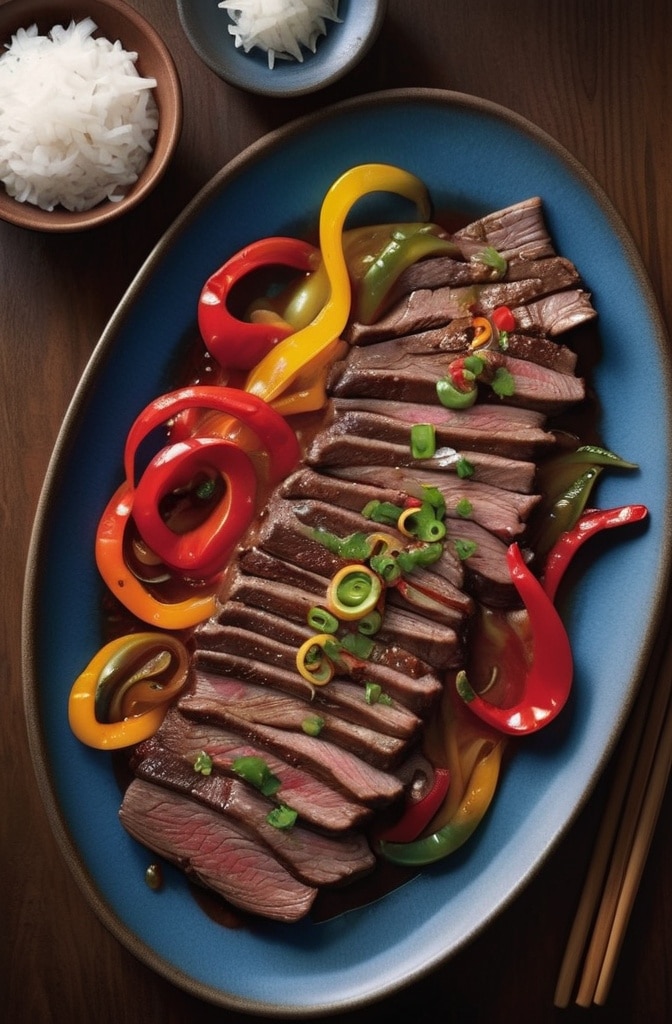
Chinese Onion Pepper Steak represents everything magnificent about Cantonese-American cuisine. It’s quick yet complex, simple yet sophisticated. This iconic dish balances tender strips of beef with colorful bell peppers and sweet onions in a savory sauce that clings perfectly to each morsel. What makes it truly special isn’t just its flavor profile but the technique—the dance of timing, temperature, and motion that transforms ordinary ingredients into something extraordinary.
Ingredients & Substitutions
For the Beef and Marinade:
- 1½ pounds flank steak (or ribeye for a more luxurious version)
- 2 tablespoons Shaoxing wine (dry sherry works in a pinch)
- 1 tablespoon light soy sauce
- 1 teaspoon dark soy sauce (adds color and depth)
- 1 tablespoon cornstarch
- ½ teaspoon baking soda (the secret tenderizing agent)
- 1 teaspoon sesame oil
- ¼ teaspoon white pepper (more complex than black pepper here)
For the Sauce:
- 3 tablespoons oyster sauce (vegetarian mushroom sauce for plant-based option)
- 2 tablespoons light soy sauce
- 1 tablespoon dark soy sauce
- 1 teaspoon sugar (coconut sugar works beautifully too)
- 2 teaspoons cornstarch
- ¼ cup water or unsalted chicken stock
- 1 tablespoon sesame oil
- 1 teaspoon freshly ground black pepper
For the Stir-Fry:
- 3 tablespoons high-smoke-point oil (peanut or avocado preferred)
- 3-4 cloves garlic, minced
- 1-inch piece ginger, julienned
- 2 medium onions, preferably yellow, cut into 1-inch chunks
- 2 bell peppers (1 green, 1 red for traditional color contrast), cut into 1-inch pieces
- Optional: 1-2 fresh red chilies, deseeded and sliced (for heat lovers)
- 2 scallions, cut into 2-inch lengths
- 1 teaspoon toasted sesame seeds for garnish
The choice of beef cut matters tremendously. Flank steak offers the perfect balance of flavor and tenderness when sliced correctly. Sirloin works well too, but avoid cuts like chuck which become chewy in quick-cooking scenarios. For my vegetarian friends, firm tofu or seitan make surprisingly good substitutes—just skip the baking soda and reduce marination time to 15 minutes.
When selecting bell peppers, look for firm ones with glossy skins. The slight bitterness of green peppers creates a beautiful counterpoint to the sweeter red ones. During summer months, I sometimes swap in colorful heirloom varieties from farmers markets for a stunning presentation. Yellow onions provide the ideal balance of sweetness and pungency, but red onions can work in a bind (tho they’ll be slightly sweeter).
Step-by-Step Instructions
Prepare the Beef
- Slice your beef against the grain into thin strips about ¼-inch thick and 2-3 inches long. The cross-grain cutting is absolutely critical—it shortens muscle fibers, ensuring tenderness even with brief cooking. If the meat feels to resistant to your knife, pop it in the freezer for 15-20 minutes to firm up slightly.
- In a medium bowl, combine all marinade ingredients, mixing well before adding the beef. Use your hands (with gloves if preferred) to massage the marinade into the meat. This isn’t just about coating—it’s about forcing those tenderizing ingredients into every fiber. Let rest for at least 30 minutes at room temperature, or up to 4 hours refrigerated.
- While the beef marinates, prepare your sauce by combining all sauce ingredients in a small bowl, whisking until cornstarch completely dissolves. I like to taste and adjust at this point—a perfect sauce should balance savory, sweet, and peppery notes. Set aside and prep your vegetables.
Master the Stir-Fry
- Heat your wok or large skillet until it’s smoking hot—literally smoking. Add 2 tablespoons oil and swirl to coat. The oil should shimmer immediately. Working in 2 batches to prevent overcrowding (which would steam rather than sear the meat), add half the beef in a single layer. Let it sear undisturbed for 30 seconds before stirring. Cook for just 1-2 minutes total until the exterior browns but interior remains slightly pink. Transfer to a clean plate and repeat with remaining beef.
- Return wok to high heat, add remaining tablespoon of oil. Add garlic and ginger, stirring constantly for just 10 seconds—burned garlic will ruin everything. Immediately add onions and stir-fry for 1 minute. They should begin to soften but retain some crispness.
- Add bell peppers and optional chilies. Stir-fry another 1-2 minutes. I’ve found the perfect pepper has slight char marks but maintains structural integrity with a pleasant crunch. A common mistake is cooking vegetables until limp—resist this temptation!
- Return beef and any accumulated juices to the wok. Give your sauce mixture a quick re-stir (cornstarch settles) and pour it in. Toss everything together as the sauce bubbles and thickens, which happens surprisingly quick—usually within 30 seconds. Add scallions and give everything a final toss.
- Transfer immediately to a serving platter and sprinkle with sesame seeds. Serving hot is imperative—the textural contrast between crisp vegetables and tender beef diminishes rapidly as the dish cools.
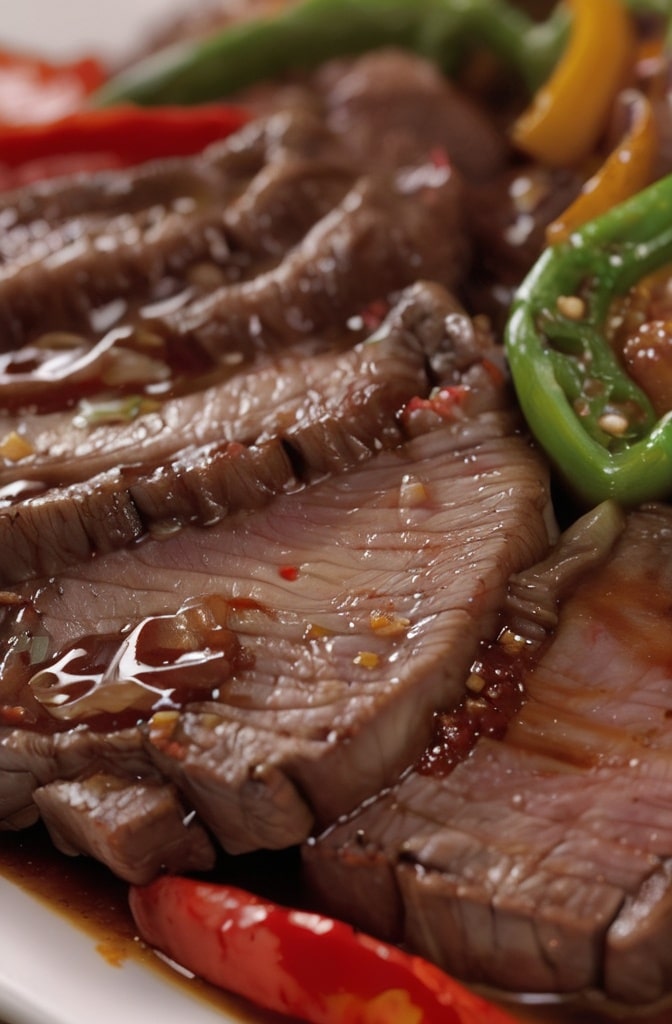
The most common error I see is overcooking the beef. Remember that residual heat continues cooking everything even after leaving the wok. If you cook until everything looks “done” in the pan, it’ll be overdone on the plate.
For a variation that’s popular in northern China, add 1 teaspoon of Sichuan peppercorns (toasted and ground) to the sauce for a delightful numbing quality. Vegetarians can substitute king oyster mushrooms sliced into strips—they provide remarkable meaty texture when properly seared.
Cooking Techniques & Science
The magic of pepper steak lies in understanding the “wok hei”—that elusive breath of the wok that imparts smoky complexity to stir-fried dishes. This requires extremely high heat that creates partial caramelization and even slight charring of proteins and sugars. In professional kitchens, burners reach 50,000-100,000 BTUs, compared to home ranges typically maxing out around 12,000 BTUs. To compensate at home, work in smaller batches and allow your wok to reheat fully between additions.
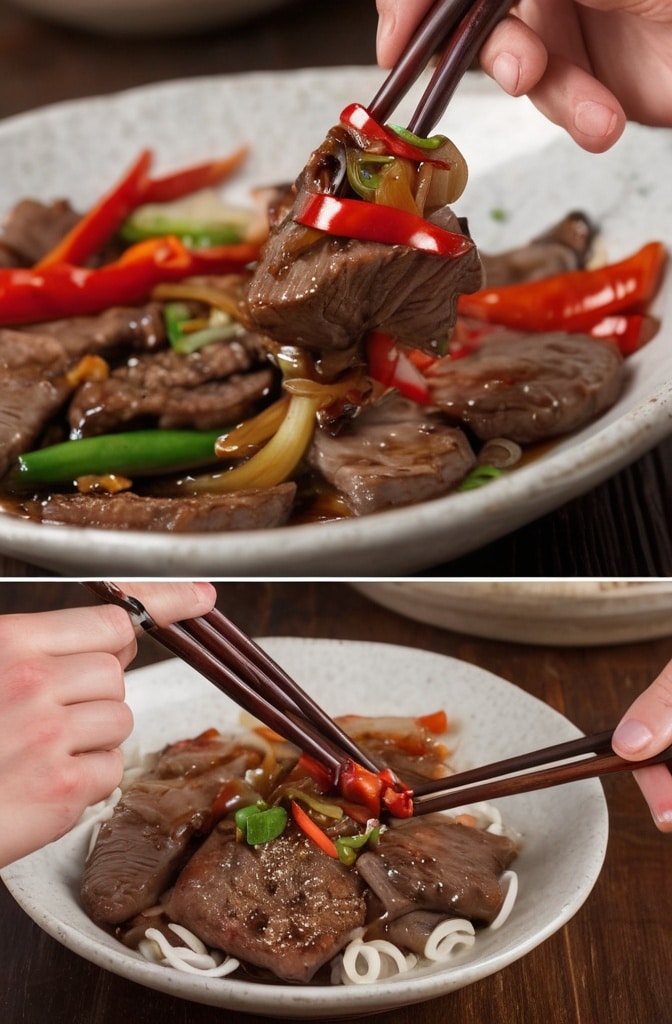
The marinade performs multiple functions beyond flavoring. The cornstarch creates a protective coating that prevents moisture loss during high-heat cooking. Meanwhile, baking soda (sodium bicarbonate) works by breaking down protein structures and raising the pH of the meat surface, which inhibits protein bonds from tightening during cooking. The science here is fascinating—this simple powder fundamentally changes how muscle fibers respond to heat.
The velveting technique—that brief initial cooking of marinated meat—originated in imperial Chinese kitchens. It creates that distinctively tender-yet-slightly-springy texture that’s hallmark of properly prepared Chinese beef dishes. Restaurant chefs often deep-fry the marinated beef for 30 seconds in oil at precise temperatures, but our home method achieves comparable results with less fuss and significantly less oil.
For the perfect stir-fry, timing is everything. I recommend having all ingredients prepped and arranged in sequence of use (mise en place). The entire cooking process takes under 5 minutes, leaving no time to hunt for ingredients. A traditional Chinese cleaver makes quick work of vegetable prep—its broad side also conveniently transfers ingredients to the wok.
The correct motion for stir-frying isn’t random agitation but a specific circular tossing technique that continuously exposes ingredients to the hottest part of the wok—the center bottom. Properly executed, this ensures even cooking without breaking delicate ingredients. If using a traditional round-bottomed wok, a gentle flipping motion works best; for flat-bottomed versions, use a spatula with a scooping motion up the curved sides.
Serving & Pairing Suggestions
Presentation matters tremendously with this colorful dish. Serve pepper steak on a large, preferably white platter to showcase its vibrant colors. A slight mound in the center with beef pieces visible among the peppers creates the most appetizing arrangement. Avoid deep bowls which steam vegetables past their prime texture.
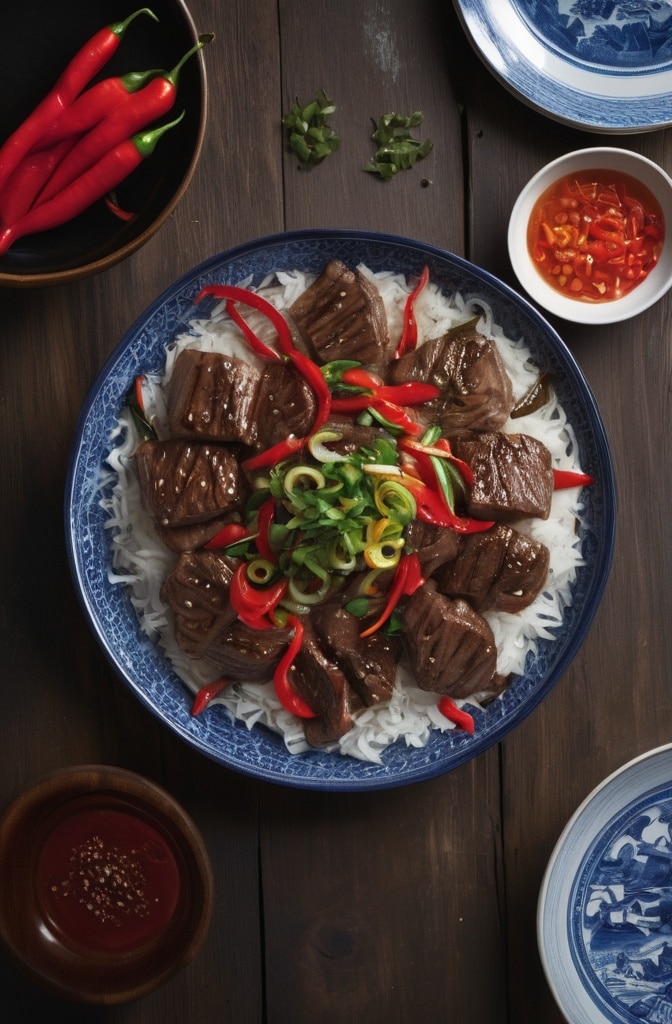
Traditionally, pepper steak appears alongside steamed white rice—preferably medium-grain for authentic Chinese dining. However, I find it equally delicious with brown rice or cauliflower rice for those watching carbohydrates. For a complete meal, balance the robust flavors with something lighter, like a simple bok choy with garlic or Chinese broccoli in oyster sauce.
Beverage pairing deserves thoughtful consideration. The peppery notes call for something that can stand up to its assertive flavor profile. A crisp Chinese lager like Tsingtao works beautifully, as does a medium-bodied Pinot Noir if you prefer wine. For non-alcoholic options, a slightly bitter oolong tea cuts through the richness perfectly.
If serving as part of a larger Chinese meal, consider complementary dishes with contrasting flavors and textures. Hot and sour soup provides acidic contrast, while steamed dumplings offer a softer textural counterpoint. For family-style dining, position pepper steak as your central protein dish surrounded by vegetable-focused sides.
The leftovers—if you’re lucky enough to have any—actually improve overnight as flavors meld. However, to preserve textural integrity, store sauce separately from solids when possible. Reheat gently in a skillet rather than microwave to prevent further cooking of the beef.
Conclusion
Chinese Onion Pepper Steak exemplifies how seemingly straightforward techniques, when executed with precision, create dishes far greater than the sum of their parts. The alchemy happens when properly tenderized beef meets blazing heat, vegetables retain their vibrant crunch, and a well-balanced sauce brings everything together in perfect harmony.
What separates an exceptional pepper steak from an average one isn’t exotic ingredients or complicated preparations, but rather respect for fundamentals—precise cutting, proper marination, careful heat management, and impeccable timing. These principles extend beyond this single dish to inform all Chinese cooking.
I’ve prepared this dish hundreds of times over decades, and it continues to teach me something new—whether it’s the way different beef cuts respond to the marinade or how slight adjustments in cooking time affect the final texture. The humble pepper steak remains a touchstone for evaluating a chef’s fundamental skills precisely because it cannot hide behind elaborate presentation or exotic ingredients.
Master this dish, and you’ve mastered the essence of Chinese stir-frying. There’s something deeply satisfying about transforming simple ingredients into something so flavorful in mere minutes—a reminder that great cooking often relies more on technique than complexity. So heat that wok until it’s smoking, slice your beef against the grain, and prepare to experience one of Chinese-American cuisine’s most beloved classics at its absolute best.
Frequently Asked Question?
Why does my beef turn out tough instead of tender?
The three key factors are: slicing against the grain (perpendicular to visible muscle fibers), using the baking soda tenderizing technique, and very brief cooking. Overcooking is the most common culprit—beef should only be about 70% cooked when removed from the wok the first time, as it will continue cooking when returned with the sauce.
Can I prepare components ahead of time for a quicker dinner?
Absolutely! The beef can marinate overnight (though no longer, as texture becomes mushy). Vegetables can be cut and stored in airtight containers for up to 8 hours. The sauce can be mixed and refrigerated for up to 3 days. Just bring everything to room temperature before cooking and proceed with the stir-fry steps when ready to serve.
My sauce never thickens properly—what am I doing wrong?
First, ensure your cornstarch is fully dissolved before adding to the wok. Second, the sauce must come to a boil to activate cornstarch’s thickening properties. Finally, if your wok isn’t hot enough, the sauce will take too long to thicken, resulting in overcooked ingredients. Remember that sauce continues to thicken as it cools, so it should be slightly thinner in the wok than you want on the plate.
How can I get restaurant-quality results with my home stove?
The main limitation of home cooking is heat output. To compensate: use a wok sized appropriately for your burner to maximize heat transfer, cook in smaller batches to maintain temperature, allow your wok to reheat fully between batches, and keep ingredients at room temperature so they don’t cool the wok when added. A flat-bottomed carbon steel wok typically works best on home ranges.
Is this dish authentic Chinese or American-Chinese cuisine?
Pepper steak falls into the Chinese-American category, though it has roots in Cantonese cooking techniques. The dish as we know it today was popularized in American-Chinese restaurants during the mid-20th century. Regional variations exist throughout China, typically with different vegetable combinations and less emphasis on bell peppers specifically. The techniques used—high-heat stir-frying and velveting meat—are authentically Chinese regardless of the specific ingredient combination.
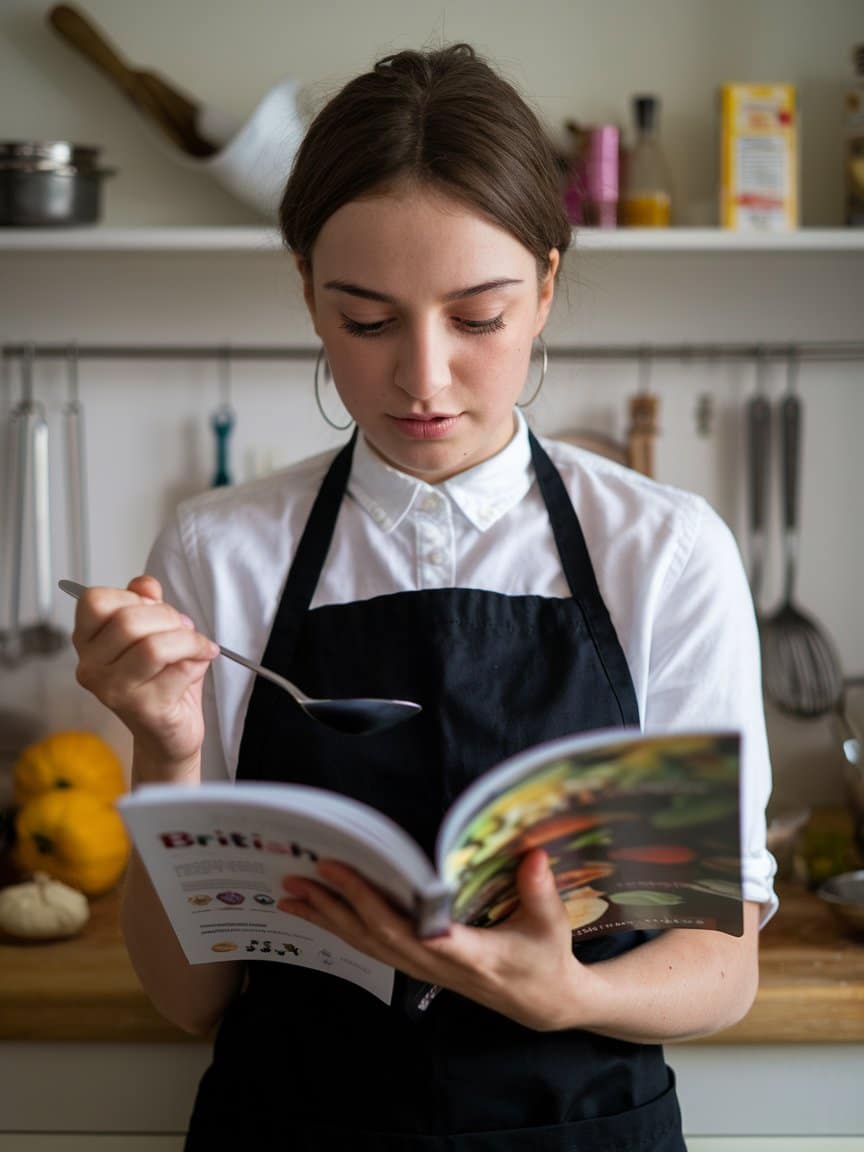
Veronica is a passionate food enthusiast with over three years of experience in exploring and writing about diverse cuisines. Her expertise lies in reviewing restaurants, sharing creative recipes, and discovering the latest food trends. As the voice behind FoodieRecap.com, Anju brings fresh perspectives and culinary insights to her audience.
